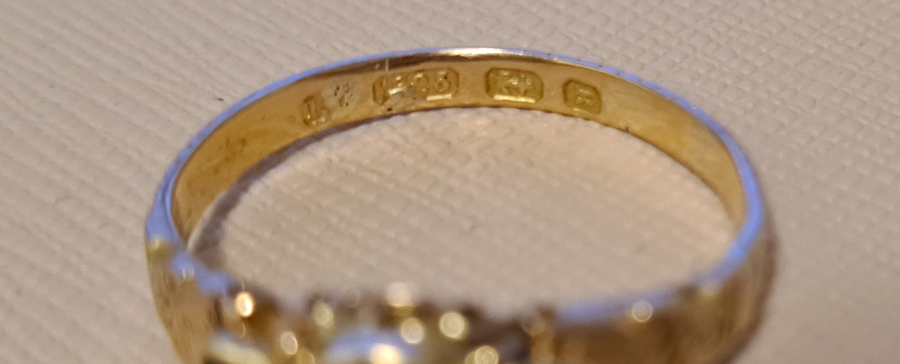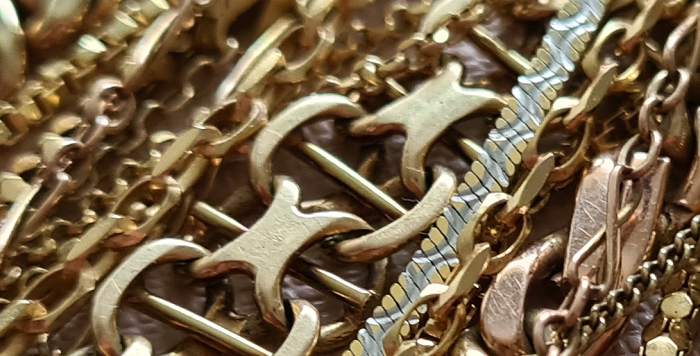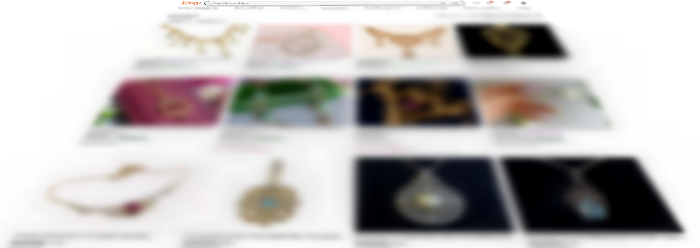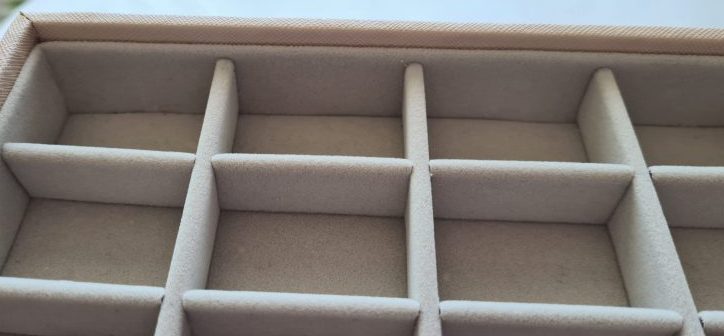
What determines the value of antique jewellery?
A 200 g gold bar’s value will only fluctuate based on the current gold prices. Unless there’s something about the bar that makes it particularly collectible to some people, the value will only be affected by what the material is worth. With antiques – jewellery or otherwise – there are multiple factors that play into the value. In this article, we’ll take a look at some of these factors.
Materials and Workmanship
Materials do of course matter. If nothing else, the metal and the stones that make up a piece of antique jewellery have an intrinsic value of their own, so even if the piece is in terrible shape, bent and broken beyond repair, the amount of gold and the fineness of it, the number of precious stones, their size, colour, cut and clairity, all provide some value.
Needless to say, something that’s well designed and well made is more valuable than something shoddily done and mass-produced. Consider for instance a pendant brooch where the pin is cleverly hidden by the design when worn as a pendant, compared to one where the pin is not only clearly visible, but breaks with the design and looks out of place.
Marks and Provenance
It may be difficult to pinpoint the exact age of a piece of jewellery, and unless you’re dealing with something truly special and exquisite, there is little hope for knowing the provenance of a piece. However, being able to tell for sure when and where something was made adds to the value, and so complete hallmarks (which tells you the year and city of manufacture for English jewellery) and maker’s marks are a definite boon. The latter may or may not add much value – in most cases, we have limited information about the goldsmith in question, but knowing that an antique was made by a well-known jeweller who catered to the upper echelons of society will increase its value.
Similarly to a maker’s mark, having the original box (especially when it’s a fitted one, as one cannot really otherwise verify that the item and the box belong together) can provide both a verification of who the maker was and add to the value.
Tech and Trend
While the materials used will always provide a certain amount of value, some jewellery will catch high prices even if no precious metals or stones were used. Consider for instance Georgian paste jewellery and cut steel jewellery, or perhaps Victorian hair jewellery and garnets set in tombac. In their day they were the pinnacle of fashion, and they were made with the same attention to details as their more precious counterparts. They may perhaps be compared to modern day costume jewellery which, when made by the right designer brand, can catch the same prices as fine jewellery. However, be mindful of what sort of non-precious materials you’re dealing with and their age – paste in an age where access to real gemstones were limited and people didn’t really differentiate between natural and man-made is more valuable than paste in an age where it was only used as a cheap replacement for the real deal in the least expensive jewellery on the market.
Condition and Age
This really goes without saying, but the state a piece of jewellery is in, does of course have a huge impact on its value. An unaltered piece of jewellery that’s not missing any pieces, with no damage or wear to it, will catch better prices. Consider for instance having the original chain that went with a pendant, instead of a modern one, or earrings with their impractical original wires, rather than modern posts.
The condition of the jewellery and what one might expect is of course affected by its age. Georgian jewellery is less likely to have survived in pristine condition than Edwardian jewellery, and so a small dent or some wear may not really impact the value too much on older pieces. Age itself does certainly play a big part in the valuation, as the chance of something having survived wear and tear and changes in fashion decreases with each passing decade.
Scarcity and Popularity
These two do not necessarily go hand in hand, but they often do. Scarcity in and of itself may of course be a matter of there initially having been made only a small volume of pieces, or a large portion of whatever was made having either been altered or broken. An example of the latter is Berlin iron jewellery, where much of what was once made has rusted away or been broken due to the brittleness of the material.
Scarcity will of course drive up prices, as will popularity. Antique lovers will sometimes offhandedly make comments about Martha Stewart’s impact on the antiques market, as her praising of something vintage or antique is likely to make it more collectable and thus drive up prices. She is of course not the only person who may affect the pricing of antiques – and I don’t believe she’s been involved in any sort of “jewellery inflation”, but when old and new fashions align, one may expect prices to rise as more people will be willing to pay for something historically accurate. The popularity of historical dramas may also bring a new customer base to the antique market, but the actual demand may not increase all that much; consider for instance the TV shows “Downton Abbey” and “Bridgerton”, the former being set in Victorian and Edwardian times and praised for its attention to detail and authenticity in the costume department, and the latter being set in the Regency era with little to no interest in realistically depicting the fashion of the day. Those who would feel inspired by the former would not only have more to choose from if they wanted some authentic jewellery, they would also be more likely to find something they liked (given the creative freedoms taken by the Bridgerton costume department) at an attractive price point.
Curated Collections
When we buy second-hand, we usually either buy from someone who knows what they’re selling or someone who doesn’t. Those who don’t would be estate sales or second hand shops that don’t specialise in anything in particular, and where little attention is paid to valuing the stock. They may go through new stock and picking out what appears to be of value (say, looking for hallmarks on jewellery), but when making a purchase, you’re pretty much on your own. You’re likely to pay a relatively low price, but there’s nobody there who’ll vouch for the age of your new brooch and you cannot tell for sure if the stones are sapphires or paste. You may come across these kinds of shops on marketplaces like ebay and etsy as well, where the prices are fairly low, matching the amount of information provided and, oftentimes, the quality of the photographs.
When buying from a antique jewellery dealer, however, you can – and should – expect that the seller has done all necessary tests to verify (as far as possible) the age and completeness of the item, as well as having tested the metal and the stones. These sellers will usually have a lot of knowledge about the kinds of items they source and resell, which provides added safety for you as a customer, but you will also be paying a higher price than if you’d come across the same item in a general second hand store.






Comments